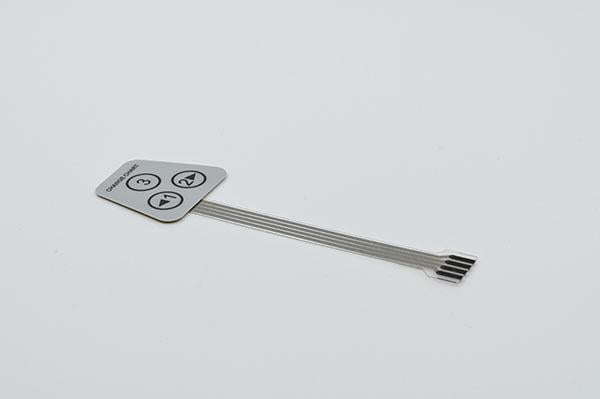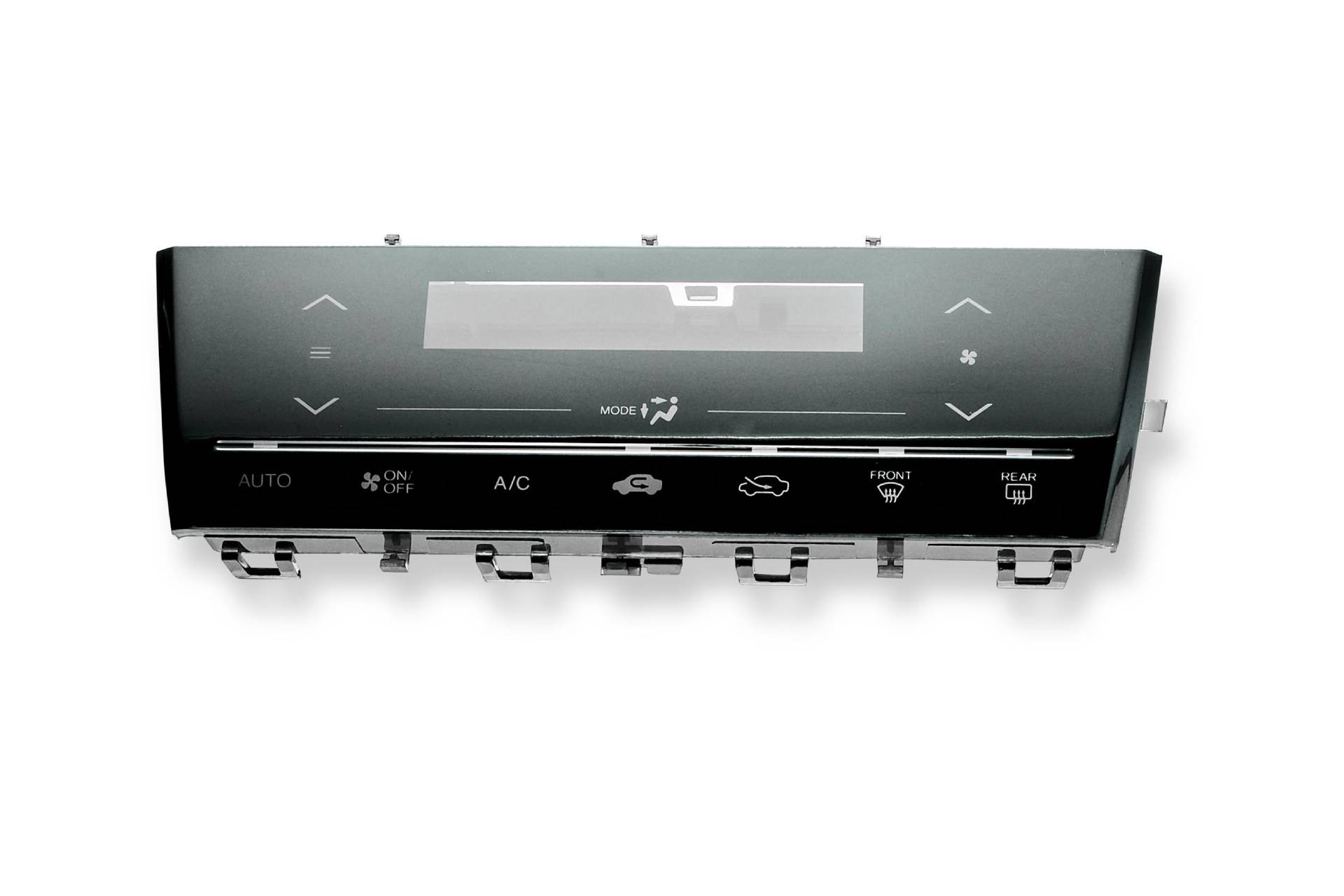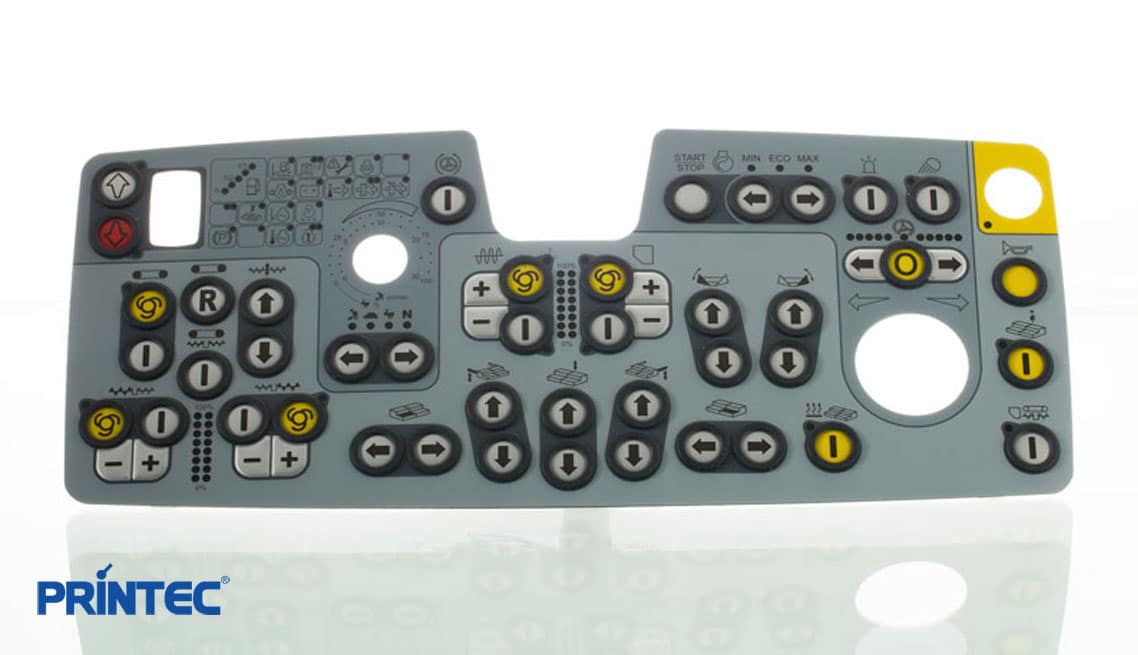Collaborating with an experienced membrane switch manufacturer enhances your development process.
Collaborating with an experienced membrane switch manufacturer enhances your development process.
Blog Article
Everything About Membrane Layer Change: Understanding Its Layout and Performance
When you think of the control interfaces in contemporary gadgets, membrane buttons commonly come to mind. These elements are greater than simply buttons; they mix layout and performance effortlessly. Comprehending exactly how they function and what makes them reliable can change your point of view on day-to-day electronics. However, there are subtleties to their layout and efficiency that you may not be conscious of. Allow's discover what collections membrane changes in addition to other control systems.
What Are Membrane Layer Switches?

Their seamless nature makes them simple to clean and resistant to dirt and dampness, an essential attribute in numerous atmospheres. Membrane layer buttons can additionally be personalized relating to shape, dimension, and graphics, enabling suppliers to create unique interfaces customized to details items. And also, they're light-weight and slim, which helps in decreasing the overall mass of gadgets. Overall, membrane buttons play a substantial function in boosting individual experience throughout a large array of applications.
Just How Membrane Layer Switches Over Job
When you push a trick on a membrane layer button, it triggers a straightforward yet effective mechanism. The top layer, frequently made of adaptable product, lowers onto a conductive layer under it. This action bridges the gap in between conductive traces, completing an electrical circuit. As quickly as the circuit closes, it sends a signal to the tool's controller, which translates your input.
You'll discover that the tactile comments differs based on the button design, supplying either a soft click or a more obvious action. When you launch the secret, the membrane layer returns to its original position, reopening the circuit and stopping the signal. This process happens virtually instantaneously, guaranteeing a receptive user experience.
Membrane buttons are prominent because of their resilience and resistance to dust and wetness, making them ideal for different applications, from house devices to clinical devices. Recognizing this operation assists you appreciate their extensive usage.
Key Parts of Membrane Layer Switches
Comprehending the essential components of membrane layer switches is basic for understanding their capability and design. At the core, you'll find the graphic overlay, which gives the visual user interface for individuals. Below that, there's a spacer layer that separates the circuit layers, ensuring that they do not make call till pushed. The circuit layer is where the magic takes place; it includes conductive traces that finish the circuit when you push the switch. An additional vital component is the adhesive backing, allowing the switch to follow surfaces securely. The safety layer guards against ecological factors and wear, expanding the switch's lifespan. Each element plays a substantial duty in making sure trusted performance and individual communication. By recognizing these components, you'll gain understanding right into just how membrane layer switches over run and their value in various applications.
Products Used in Membrane Switch Over Design
The efficiency and durability of membrane changes greatly rely on the materials used in their design. You generally encounter polyester and polycarbonate as primary substratums as a result of their exceptional stamina and flexibility. These materials resist scrapes and chemicals, making them suitable for demanding environments.
The conductive layers commonly use silver or carbon, chosen for their reliability and conductivity. membrane switch manufacturer. Silver offers remarkable performance, while carbon is a cost-effective alternative. For the overlay, you may think about a matte or glossy coating, relying on your visual requirements and customer experience
Make certain to choose adhesives that endure environmental variables like temperature and moisture. Selecting the ideal materials will assure your membrane layer button stands the examination of time.
Layout Considerations for Membrane Layer Buttons
While try here developing membrane layer buttons, it's important to take right into account various aspects that influence their functionality and customer experience. Begin by concentrating on the format and button size; make sure they're user-friendly and simple to browse. Think about the responsive responses you wish to supply-- will customers require an obvious click or a softer touch? Furthermore, think of the materials you'll make use of, as they'll impact longevity and aesthetic appeals.
Verify your style accommodates ecological aspects, like dampness or temperature level variations, which might influence performance. By carefully considering these elements, you'll create a membrane switch that boosts functionality and satisfaction.
Applications of Membrane Layer Switches
Membrane switches are flexible components found in different applications, from commercial devices to customer electronic devices. You'll see their effect in devices that need durable user interfaces and in tools that take advantage of smooth layouts. Recognizing these applications assists you value the capability and functionality of membrane switches in daily technology.
Industrial Tools Usage
When you're seeking to enhance the capability of commercial devices, membrane layer switches offer a trusted service that click site combines longevity with straightforward style. These switches are perfect for extreme settings, providing resistance to dust, moisture, and chemicals. You'll find them in control panels for producing equipments, heating and cooling systems, and medical devices, where accuracy and responsiveness are essential. Their reduced account indicates they fit seamlessly right into different tools, saving beneficial space while maintaining convenience of use. With personalized graphics and backlighting choices, you can create an intuitive user interface for operators, enhancing efficiency and safety and security. And also, their long life expectancy minimizes upkeep prices, making them a smart financial investment for your commercial applications. Welcome membrane layer switches to streamline your procedures and enhance total performance.
Customer Electronic Devices Combination
In the domain of customer electronic devices, membrane layer switches play a crucial function in improving customer interaction and tool functionality. Membrane layer switches also guarantee resilience and resistance to dust and wetness, extending the life-span of your electronics. By picking membrane layer buttons, you boost not simply the performance but additionally the design of your devices, making daily communications smooth and pleasurable.
Advantages and Disadvantages of Membrane Layer Switches
While membrane switches supply an array of benefits, they also come with some downsides that you ought to think official statement about. One considerable advantage is their small layout, making them excellent for space-constrained applications.

Nevertheless, there are disadvantages. Membrane switches can have a much shorter life expectancy compared to mechanical buttons, particularly under heavy use. They can additionally be less tactile, which might influence customer responses throughout operation. Moreover, if harmed, repairing them can be difficult and typically needs complete substitute. Eventually, their level of sensitivity to severe temperatures and environmental problems may restrict their efficiency in certain settings. Balancing these advantages and disadvantages will certainly help you determine if membrane layer switches are the right suitable for your task.
Regularly Asked Questions
How Much Time Do Membrane Layer Switches Commonly Last?
Membrane layer switches over usually last between 5 to one decade, relying on usage and ecological conditions. You'll intend to evaluate factors like wear, direct exposure to moisture, and temperature level variations to determine their longevity efficiently.
Can Membrane Layer Changes Be Custom-made for Certain Designs?
Yes, you can tailor membrane switches to fit particular designs (membrane switch manufacturer). You'll have the freedom to pick shades, forms, and formats that match your project's needs, guaranteeing they mix effortlessly with your total visual
What Is the Cost Range for Membrane Switch Manufacturing?
The price range for membrane button production usually drops in between $1 and $10 each, depending on aspects like design complexity, quantity, and materials. You can obtain quotes from makers to find the very best option.

Are Membrane Layer Changes Water Resistant or Resistant?
Membrane layer switches can be designed to be waterproof or immune, relying on materials used and building approaches. If you require them for damp environments, ensure you specify those requirements during the design procedure.
Just How Do Membrane Layer Changes Compare to Standard Buttons?
Membrane layer buttons are normally thinner and a lot more flexible than standard switches, using a sleek design. They're typically easier to clean up and incorporate, however might not provide the tactile feedback you're used to with mechanical alternatives.
Final thought

Report this page